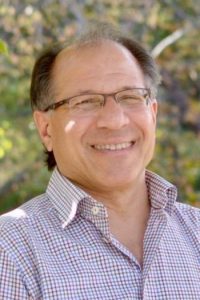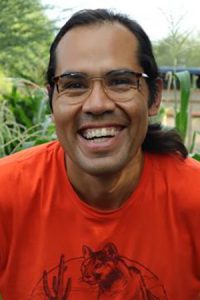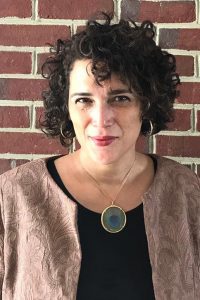
An April symposium at Grainger Hall, People and Nature, brought a diverse set of speakers, both from Duke and other U.S. institutions, to examine the relationship between human culture and land and to discuss pressing issues such as environmental justice. The session was organized by PhD students Nicholas School of the Environment and the biology department.

Professor Paul Manos of Duke Biology told us how oaks, ubiquitous tree species in temperate regions, can make people think about nature. A walk in the woods looking at the different oaks can result in a fascinating journey of natural history. For those who are curious enough, an inquiry into the lives of oaks will take them deep into topics such as evolutionary history, leaky species boundaries, plant-animal interactions, among others, Manos said. Keeping true to the theme of the symposium, Manos explored some hypotheses about the first time that humans had contact with oaks, and how this relationship unfolded ever since.

Associate Professor Orou G. Gaoue of the University of Tennessee, Knoxville, took us through a detailed case study of human and plant interactions with long-term data from the country of Benin, in Africa. He showed how the harvest of the African mahogany (Khaya senegalensis) affects human demography and even the marriage dynamics of the Fulani people, with many other insights into the intertwined relationship of the locals and their harvest.

Central to the morning sessions were the rights of nature and the granting of personhood to non-humans, which is common in the cosmology of many indigenous cultures. For instance, Andrew Curley, assistant professor at the University of Arizona, mentioned in his talk that the O’odham people in the Sonoran Desert confer the Saguaro cactus personhood status. His talk exposed how colonial dynamics have created climate catastrophes and drought around the Colorado River, how indigenous peoples have to navigate these foreign systems, and how they understand their relationship with the land and water.
Michelle Carter, a first-year Masters of Environmental Management (MEM) student at Duke, examined the feasibility of the rights of nature in the US legal system. These rights allow certain natural features (e.g. rivers) to stand as a sole party in litigation and recover damages on their behalf. However, effective application and the enforcement of policy have been lacking.
The second part of the symposium focused on environmental justice. Duke Ph.D. student Maggie Swift presented a land acknowledgement which was divided into three parts: recognition of the violent history of the past; an understanding of the present with a celebration of the lives and achievements of current indigenous peoples; and a call to action so that participants were encouraged to financially support native-led organizations. Links for donations and more information can be found on the symposium website. The land acknowledgement was followed by a brief presentation on the project Unearthing Duke Forest that explores the human history surrounding Duke Forest.
Why is it important to jointly consider people and nature in your work? What insights do you gain in your work by taking this approach?
People & NAture

Assistant professor Christine Folch, from Duke’s Department of Cultural Anthropology provided an analysis of the discourse around climate change. At the center was the question “do you believe in climate change?” which has ingrained the element of doubt and the ability of the speaker to say “no, I don’t.”
Associate professor Louie Rivers III, from NC State University, gave a talk on perceived environmental risks and their influence on social justice. He pointed out that these questions could be dismissed by certain groups such as black farmers, who are concerned and disproportionally affected by environmental issues but might not relate to how the question is addressed.
Sherri White-Williamson, Environmental Justice Policy director at NC Conservation Network, explained the concept of environmental justice and provided concrete examples of how certain policies (e.g. federal housing/lending policies or interstate highway systems) can create inequalities that leave communities of color to bear the exposure of environmental degradation. She also made us aware that this year is the 40th anniversary of the birth of the US environmental justice movement that started when an African-American community in Warren County, North Carolina organized to fight a hazardous waste landfill.
No exploration of people and nature would be complete without including the seas. A team of three students at the Duke University Marine Lab, undergrad Maddie Paris, second-year MEM Claire Huang, and Ph.D. student Rebecca Horan, presented two case studies of social and ecological outcomes linked to education and outreach interventions conducted in tropical marine environments.
Their first case study was on turtle education in Grenada, West Indies. Here a 10-week summer program for local children ages 9-12 created an improved understanding of marine turtle biology and its connection to the health of the ocean and their communities. The second case study was a 4-week training course for fisher people and fisheries officers in Mtwara, Tanzania. These participants increased their skills in monitoring the local reefs and were better equipped to educate their communities on marine environmental issues.
The symposium ended with two open questions for the audience, which should be considerations for anyone doing environmental research: Why is it important to jointly consider people and nature in your work? What insights do you gain in your work by taking this approach?
Guest post by Rubén Darío Palacio, Ph.D. 2022 in Conservation Biology from the Nicholas School of the Environment, and science director of conservation non-profit Fundacion Ecotonos in Colombia.
